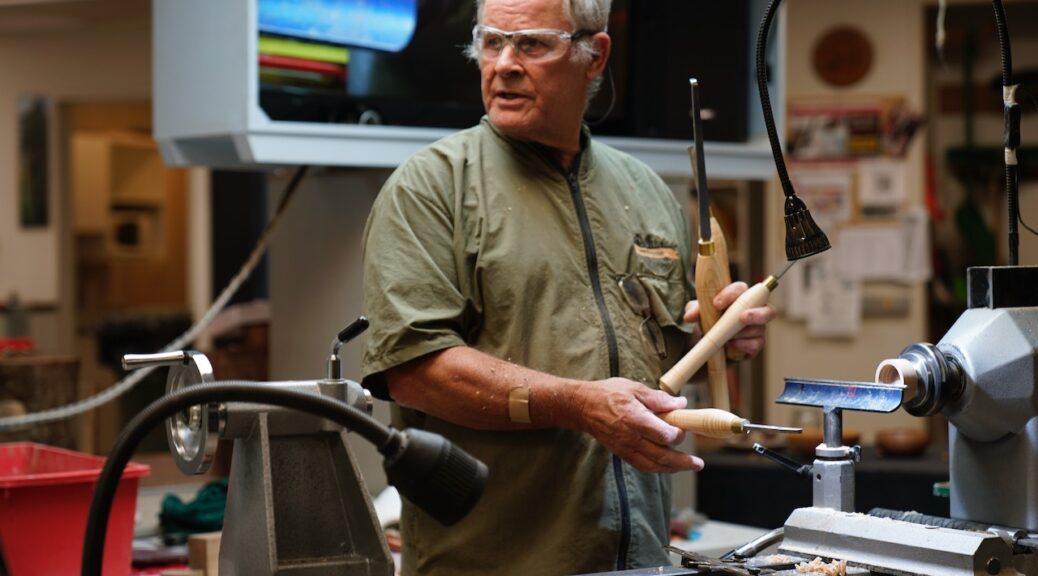Club Meeting: 10 May 2023
Report by: Kieran FitzGerald
Bruce took the wheel this week and in typical fashion took off like Stirling Moss. The exercise of thread chasing presents several tricky challenges – not least cutting the thread itself, but trying to get the thread the correct length and having everything line up. Bruce had several practice runs in preceding days, and attempts one and two were unsatisfactory. The third attempt was successful, but then he twisted it too far and broke the insert while trying to get the grain to line up.
Using a hard timber is essential for thread chasing. Titoki, black maire, pohutukawa and puriri are all good to use. Some – pohutukawa and puriri – can also be threaded cross grain.
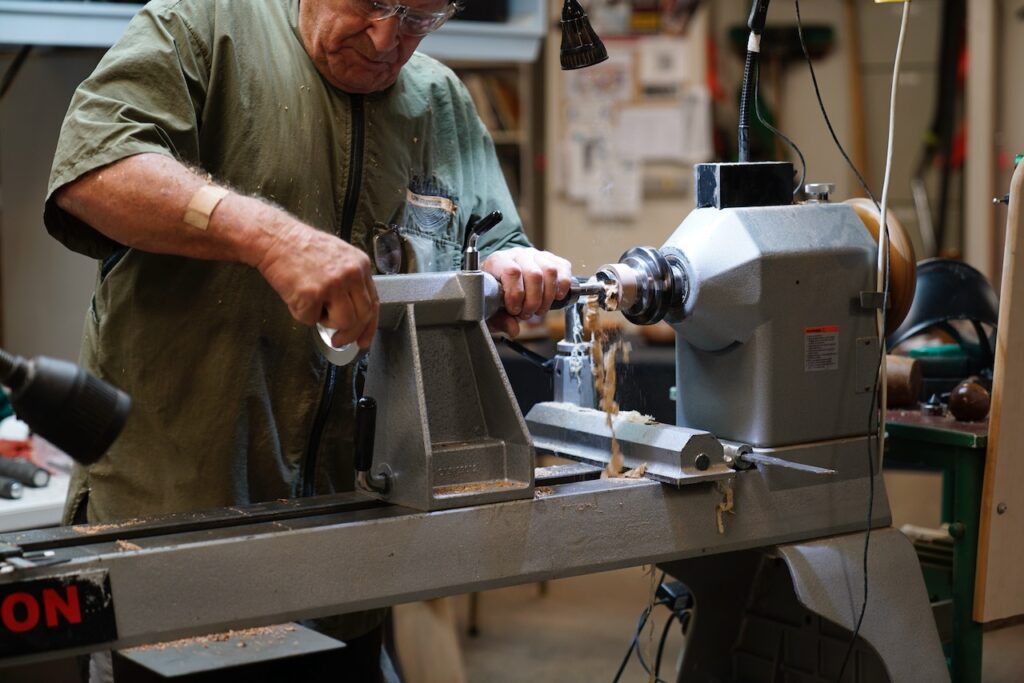
For tonight’s demo, Bruce selected a piece of black maire approx. 60 – 70mm square and 80 mm long. He marked centres on each end, mounted it on steb centres and roughed it down with a roughing gouge at 2000rpm. Black maire has a distinctive smell when cut (prompting several graphic descriptions), but cuts like butter and produces a very smooth surface. Bruce turned a 35 mm spigot on each end before marking out a 20 mm lid, a 40 mm base, and parting off. The lid goes in the chuck, is faced off and drilled out with a 45 mm forstner bit to a depth of 14 mm. The base and sides are cleaned up and a texture pattern added to the underside of the lid.
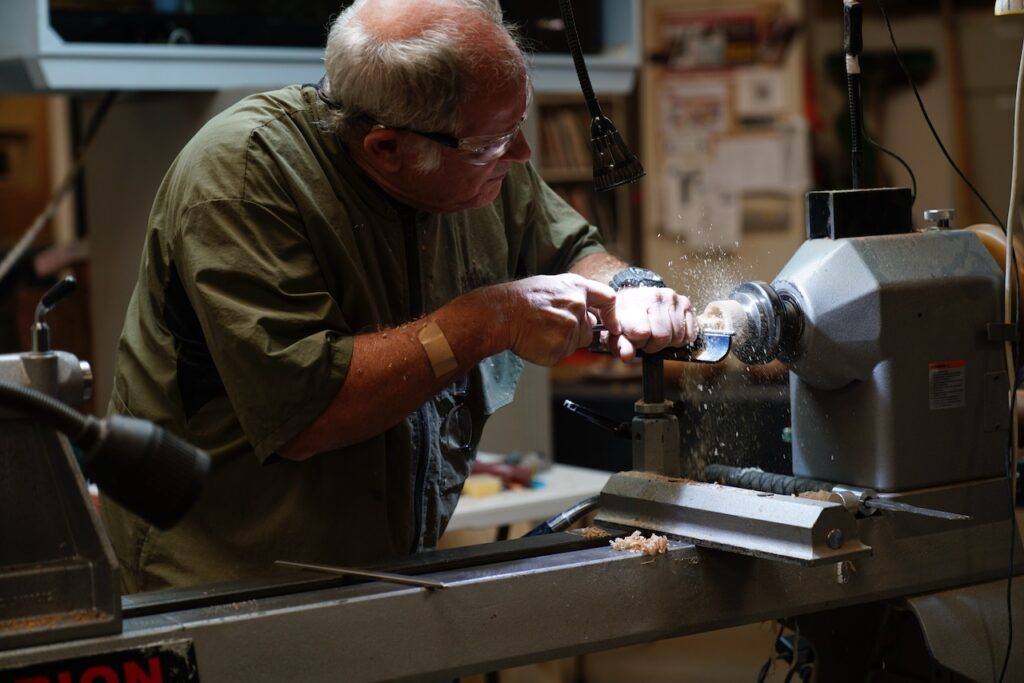
Now for the tricky part. Bruce showed us the four tools he would use to chase the threads:
- a16 tpi internal thread cutter (female)
- a 16 tpi external thread cutter (male)
- a rebate cutter
- a right angle hand held tool rest.
The first step is to use the rebate tool to make a 3 mm deep lead out cut in the side of the lid at 6mm down from the top. The purpose of this is to mark the end of a 6mm long thread and, importantly, create a clear space for the thread cutter at the end of the cut. After this Bruce applied a finish to the inside of the lid with CA, EEE and Aussie Oil.
To get the thread started, Bruce cut an arris, then with the lathe at 200 rpm, and the thread chasing tool resting on the right angle tool rest at just above centre, he started to cut the female thread. The process is to start with the thread cutter diagonally across the arris, make a light push cut and withdraw the tool. Push, withdraw, push withdraw, push withdraw repeatedly, bringing the tool round gradually until it is parallel with the side of the lid. Once the thread starts the speed of the lathe just drags the tool in. Take care not to crossthread. Bruce applied beeswax at one point to lubricate the cut. The black maire produced very fine curls of shaving, but a softer wood would just produce crumbs. As the thread cut progresses make sure it stays parallel to the side, or gets marginally deeper, so that when the male thread is screwed on it has enough width to turn fully in, and doesn’t get stuck.
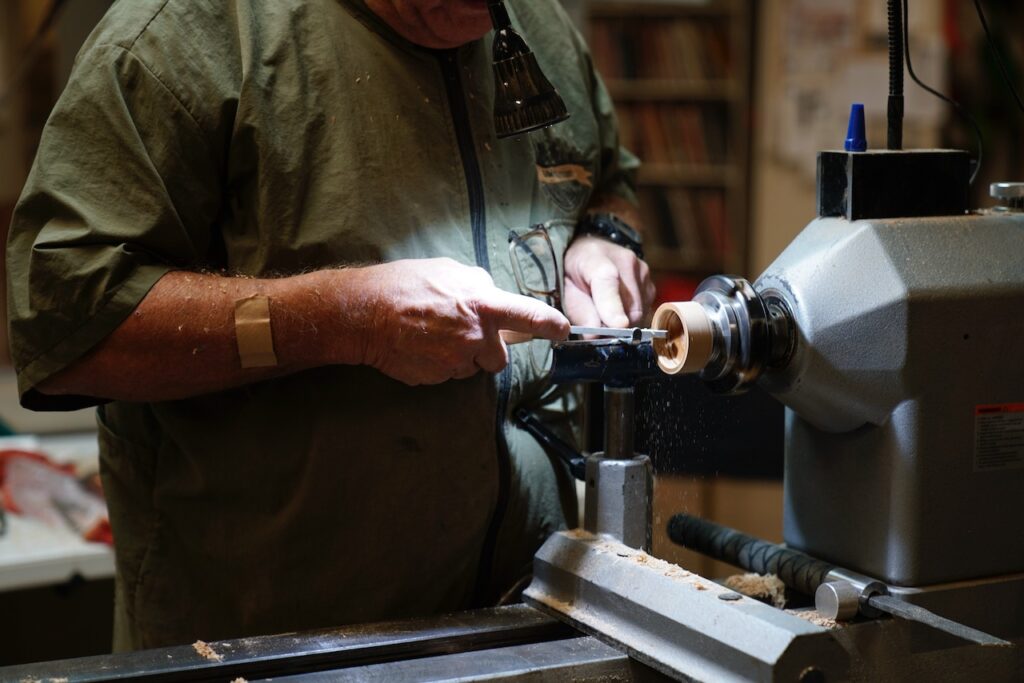
Bruce showed how to sharpen the thread chaser with a hone across the top. Now it is time to do the bottom part of the box. Take the lid out and mount the base. Face it off and hollow to 34 mm with a 35 mm forstner bit. Clean up the base and sides, and at the same time hollow out the sides a bit more towards the lower two thirds of the sides, but not at the top. This is to make it simpler to blend in the fitted insert later on. Cut a recess 3 mm down out to a width of 43 mm. Give the inside a quick sand.
The next step is to make an insert to go into the recess he has just made. Ideally this could be a contrasting colour, but remember it needs to be hard wood to accept a thread. You could cut the thread directly in the base, but the insert makes it easier to adjust the length of the thread so you don’t have to twist the lid so many times to get it on. Bruce used a piece of black maire about 20 mm long to start with. He rounded it down to 47 mm, stepped it down to 43 mm at the spigot end, and cut a 24 mm spigot. Once mounted on the spigot, he turned down the outside 43 mm, checked the fit against the base, and commenced to make the thread. Rebate, arris, and this time the external thread cutter is used. The male thread is cut slightly below centre. The routine is the same as previously described – push, withdraw, repeat, repeat, bring it round to parallel. Bruce made the thread longer than necessary with the idea of removing some of it to a precise length. Test fit, take the top off the cut threads if necessary, and keep threading and test fitting until a good fit is achieved and the threads mate nicely. Bruce adjusted the length of the piece by cutting off some off the top with a parting tool, and cut a new arris.
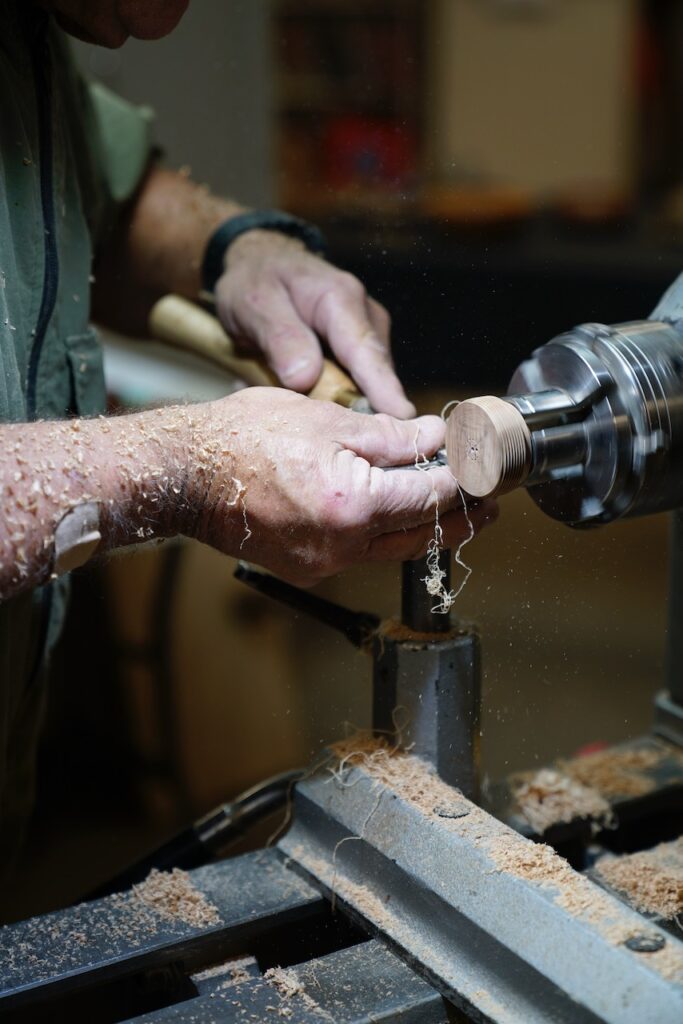
Once happy with the threaded insert, Bruce put the base back on the lathe and glued in the insert. He then drilled the centre out with a 38 mm forstner bit, blended it into the base side walls, and gave it a sand. He screwed the lid on, taped it up, and trimmed the whole exterior down to required diameter and shape. He applied texturing either side of the join, and sanded the outside. The next steps were routine box making – shape the top of the lid slightly domed, sand and finish. Rechuck the base on expanding jaws, bring up the tailstock, and remove the spigot, leaving a slightly concave bottom so it sits well. Finish it all with CA, EEE and Aussie oil.
The thread chasing technique is much harder than it seems, and requires good wood selection, careful planning, deft tool work, sometimes test fitting and adaptation, and most of all a heap of patience. We are grateful to Bruce for sharing his skill and knowledge with us. And several lucky punters scored gifts from Bruce of his finished boxes and black maire blanks. Thanks Brucie, nice to see you, to see you nice.
